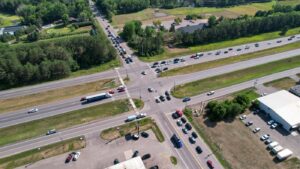
Transit experts are raising alarms about potential service cuts proposed by the Southeastern Pennsylvania Transportation Authority (SEPTA). If these reductions go forward, an estimated additional 275,000 vehicles could flood local roadways each day, significantly impacting traffic conditions in Philadelphia. This number is striking, representing nearly the total population of Pittsburgh.
The ramifications of these service cuts extend beyond mere congestion. According to a report from Action News, the influx of vehicles is likely to burden already strained infrastructure, leading to longer commute times and increased road maintenance costs. Traffic anchor Matt Pellman highlighted the potential for more severe delays during peak hours, which could frustrate both commuters and local residents.
Impact on Traffic and Commuter Experience
Experts suggest that the loss of transit options would disproportionately affect those who rely on public transportation for their daily commutes. Many individuals depend on SEPTA for access to employment and essential services. The predicted rise in vehicle numbers could exacerbate existing issues such as air pollution and traffic accidents.
The proposed service cuts come as part of SEPTA’s broader strategy to address financial shortfalls, a situation that has been complicated by declining ridership numbers stemming from the COVID-19 pandemic. Officials are grappling with the challenge of balancing budgetary constraints with the need for reliable public transport. The potential consequences of these cuts underscore the importance of public transit as a lifeline for many citizens.
In a statement, a SEPTA spokesperson noted, “We are committed to finding solutions that ensure our service remains effective while also being financially sustainable.” The agency is currently in the process of gathering public feedback to inform its final decision.
Community Response and Future Considerations
Local advocacy groups have voiced their concerns, urging SEPTA to reconsider the cuts. They argue that reducing service would disproportionately affect low-income communities and those without access to personal vehicles. The potential for increased traffic congestion could lead to adverse effects on local businesses as well, as customers might find it more challenging to reach their destinations.
As the situation develops, the focus remains on how SEPTA will navigate these complex issues. The response from the community will likely play a crucial role in shaping the future of public transportation in the Philadelphia area.
In light of these developments, residents and stakeholders are encouraged to participate in public forums and discussions to voice their opinions. The decisions made in the coming months could have lasting impacts on the region’s transportation landscape, emphasizing the need for a balanced approach that considers both fiscal responsibility and community accessibility.







